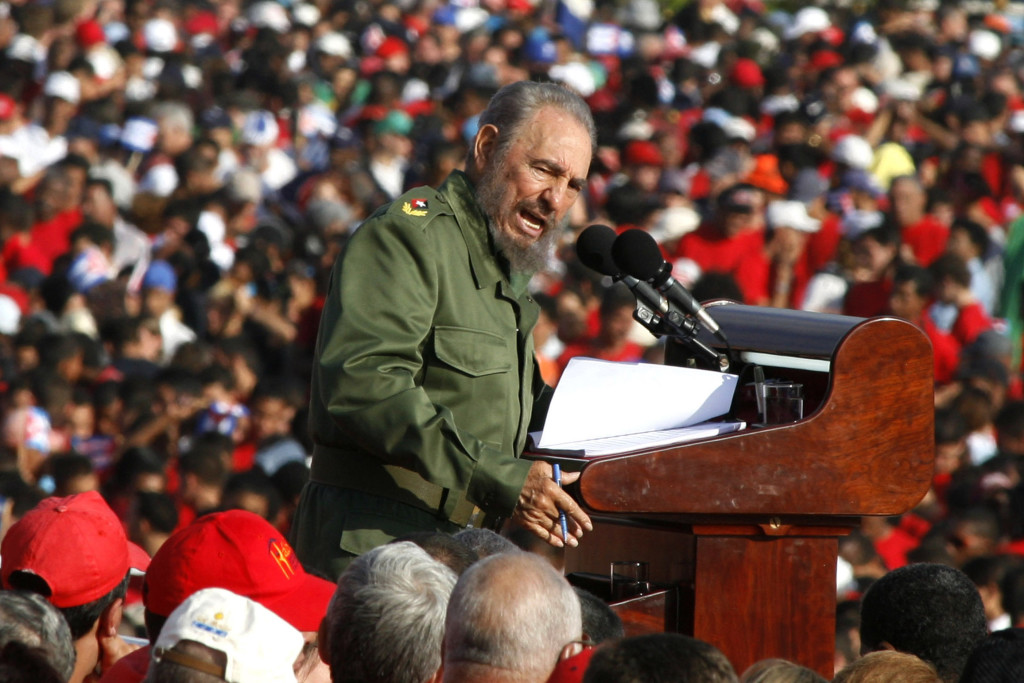
In this May 1, 2006 photo, Cuba’s leader Fidel Castro speaks on International Workers Day in Revolution Plaza in Havana, Cuba. Former President Fidel Castro, who led a rebel army to improbable victory in Cuba, embraced Soviet-style communism and defied the power of 10 US presidents during his half century rule, has died at age 90. The bearded revolutionary, who survived a crippling US trade embargo as well as dozens, possibly hundreds, of assassination plots, died eight years after ill health forced him to formally hand power over to his younger brother Raul, who announced his death on Nov. 25 on state television. AP
Malacañang on Saturday expressed its sympathies with the people of Cuba and joined the world in mourning the death of its former President Fidel Castro.
“The Palace extends its sincerest condolences to the family and people of Cuba on the demise of former President Fidel Castro,” Communications Secretary Martin Andanar said in a statement.
“The passing of former President Castro will surely be felt by the peoples of Cuba and the world. We are one with the family of Mr. Castro, the Cuban government, and the Cuban nation during this period of deep mourning,” Andanar said.
The Palace official said Castro was a revolutionary leader who focused on health, education and literacy.
“As his nation’s father, Mr. Castro focused on health, education and literacy. His achievements in social development, such as establishing a universal healthcare and providing free education, became models for many developing nations with limited fiscal resources,” he said.
Andanar said Castro was “a revolutionary who, upon assuming his island’s highest political office, reasserted his nation’s dignity and self-worth (and) stood up against the West and capitalism.”
“As it extols socialism, Cuba is one of the few societies that remain untouched by commercialism,” he said.